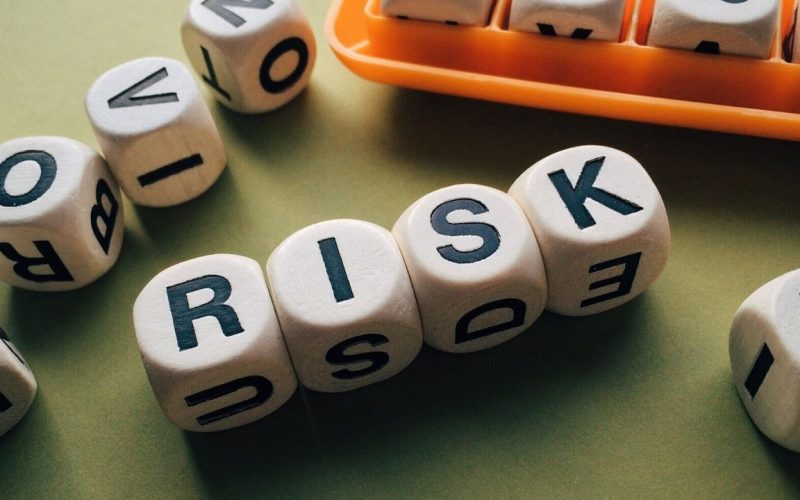As we carry out businesses every day, we are exposed to all forms of risk. Some take us to a better opportunity, while some shoot us right in the leg.
Life risks aren’t left out, as some may either leave us dead or in debt or in prison, so simply just breathing.
However, for the sake of this topic, we’d streamline our thoughts to just risks that arise as a result of one business venture or the other. With several uncertain factors, the potential risk becomes higher than ever.
This makes this article handy for you. As it aims to educate and inform you on the importance of protecting your business through a business strategy known as risk avoidance.
Let’s get started with the basics.
What is Risk Avoidance?
Risk avoidance is the elimination of hazards, activities, and exposures that can negatively affect an organization’s assets.
It can also be referred to as the elimination of hazards or activities that can increase the chance of a loss or claim.
Risk avoidance can be implemented through a number of ways, including risk strategies, where the organization or firm agrees among themselves not to be involved in an operation or to put down an operation because of the risk perceived.
In a situation where an organization or firm still possesses equipment that is outdated, thereby enabling the workers to become vulnerable to risks, they are encouraged to use the risk management or risk avoidance strategy.
This strategy would ensure that there are safe work procedures for the workers and assist them in providing protective equipment.
Risk avoidance strategies are measures companies can take to proactively protect themselves from lost revenue, falling sales, and legal liability. Although no one can predict all the possible risks, there are still techniques companies can use to minimize potential damage.
Complete elimination of every risk might be impossible, which is why a risk avoidance strategy is designed to divert as many threats as possible in order to prevent the costly and disruptive consequences of a damaging event.
A risk avoidance strategy is designed to minimize vulnerabilities that can constitute a threat. Risk avoidance can be achieved through policy and procedure, training and education, and technology implementations.
However, risk management aims to control the damages and financial consequences of threatening events, risk avoidance seeks to avoid compromising events entirely.
READ MORE: HOW TO START AN ONLINE BUSINESS WITH NO MONEY in 2021 (Updated)
Example of Risk Avoidance
When it comes to business growth, the risk avoidance strategy is not always the best option. Risk is avoided when the organization refuses to accept a particular operation which may lead to loss or regret, this means the risk is not permitted to come into existence.
This can be accomplished simply by failing to take measures that pose risks. For example, below are some risk avoidance scenarios that a business may encounter.
Examples of risk avoidance include:
- You don’t want to risk losing your savings in a risky business, so you pick one where the risk is lower.
- A company shuts down a construction site in bad weather to avoid the risk that someone will get hurt.
- You discover the use of a particular product is hazardous, then do not manufacture or sell it.
- An investment adviser recommends a stock to a client. The client reads the company’s most recent financial report and finds it a complex business with difficult to understand risk factors and decides against the investment.
- You want to avoid the risks associated with the ownership of property, so you do not purchase property but lease or rent instead.
- A soap manufacturer, for instance, could cease using harmful chemicals like parabens and use a safer, organic alternative to protect their workers and their consumers, at the cost of not having enough funding to produce the new soap.
This approach to risk avoidance would hinder this business and even prevent it from starting. Risks must be balanced and managed, but they are often impossible to avoid fully.
READ MORE: Advantages of Moving Traditional Business to Online Business
Risk Avoidance Insurance
Risk Avoidance Insurance is another major method that most businesses use to transfer pure risks, by paying a premium to an insurance company in exchange for a payment of a possible large loss.
By using the law of large numbers, an insurance company can estimate fairly reliably the amount of loss for a given number of customers within a specific time.
An insurance company can pay the losses because it pools and invests the premiums of many policyholders to pay the few people who are going to suffer major losses. Not every pure risk is insurable by private insurance companies.
Events that are unpredictable and could cause extensive damage, such as earthquakes, are not insured by private insurers.
Although reinsurers may cover these types of risks by relying on statistical models to estimate the probabilities of disaster. Speculative risks which are taken in the hope of making a profit are also not insurable. Since these risks are taken voluntarily,they are not pure risks.
READ MORE: HO5: Overview, Policy forms, Charts & Insurance Guide
Advantages of Risk Avoidance
The main aim of the Risk avoidance strategy is to critically protect the time and money put into starting up a business.
The nature of a specific business will determine the kinds of risks that are most likely to occur and the most important ones to prevent.
The following are the advantages of risk avoidance strategy:
#1. Protect your finances
One important advantage of risk avoidance that cannot be overlooked is the protection of your finance. This is done by reducing the financial risks using a two-tiered approach:
Keep your business debt low and your customer payments high.
Identify customers with outstanding balances or poor credit and take steps to ensure they pay you on time. You may need to require advance payments from customers with poor payment histories.
#2. Build sales through marketing
Another important advantage of a risk avoidance strategy is the ability to build your sales through marketing.
During the coronavirus pandemic, the shutdown of all business activities had a different impact on industries, companies, and so on. While some flourished, some suffered it.
Strengthening marketing is a strategy to attract consumers to your business and generate more income.
READ MORE: Credit Shelter Trust: The Complete Guide for Beginners (+ Quick Tips)
#3. Prepare for remote working
This advantage of the risk avoidance strategy is beneficial to people working from home. If you work in a company that encourages its employees to work from the comfort of their homes, then you understand this perfectly.
The work from home risk avoidance strategy prevents employees from the risk of accidents that may occur at any time and anywhere.
During the pandemic, most companies were advised by the government to encourage their employees to work in person and prevent them from claims of negligence or illness.
#4. Insure your business
Insurance is a risk-avoidance strategy, as it helps protect your business from litigation that could be devastating.
Choosing the right insurance policies for your business depends on the type of business you own.
The following are important policies that might be useful for your business:
- Professional liability insurance protects against claims of negligence.
- General liability insurance protects against personal injury such as libel and claims of accidental property damage or bodily injury.
- Business owners’ policies provide general liability and property insurance for your business.
- Cybersecurity insurance protects against digital risks. It is especially important for businesses that accept credit cards or other forms of digital payment.
READ MORE: Market Penetration: Best 2021 Strategies & Definitive Examples (Updated)
What is meant by risk avoidance?
In order to reduce liability exposures, risk avoidance refers to the process of attempting to prevent compromising situations. You can manage the harm to your company caused by claims or losses by reducing your exposure to risk.
When should risk avoidance be used?
When an organization refuses to accept risk, it can avoid it. The existence of the exposure is prohibited. Simply refraining from taking the risk-producing action does this. Choose a less risky enterprise if you do not want to run the danger of losing your savings.
What is risk mitigation and avoidance?
Definition of Risk Mitigation A risk’s ability to negatively affect the business and the likelihood that it will be realized are both fully removed through risk avoidance.
What is the difference between avoidance and risk control transfer?
When dealing with a bad risk, also known as a threat, there are three proactive strategies to consider: Avoid – take no risks. Transferring means moving the impact to an other party. Reduce the likelihood or impact by mitigating.
Is risk avoidance a risk management strategy?
The only risk management tactic that aims to entirely obliterate the likelihood that a certain risk will materialize and/or its capacity to have any kind of impact on the company is risk avoidance.
What is risk avoidance in cyber security?
Risk avoidance is a risk management tactic that aims to completely remove the possibility of risk by refraining from actions that expose one to risk. The disadvantage of risk avoidance is that it may reduce an organization’s opportunities.
What is a mitigation strategy?
A program or activity to lessen or eliminate the risk brought on by a hazard is referred to as a mitigation strategy.
Risk Avoidance vs Risk Reduction
Risk avoidance and risk reduction are two similar strategies to risk management, but yet they possess some dissimilarities.
Like Risk avoidance which deals with eliminating any exposure to risk that poses a potential loss, risk reduction deals with reducing the likelihood and severity of a possible loss.
The differences between the two strategies are stated below:
Risk avoidance is not performing any activity that may carry risk. For example, if an investor wants to buy stock in an oil company, but oil prices have been falling significantly over the past few months.
There is political risk associated with the production of oil and credit risk associated with the oil company.
He assesses the risks associated with the oil industry and decides to avoid taking a stake in the company. This is known as risk avoidance.
On the one hand, risk reduction deals with mitigating potential losses. For example, suppose this investor already owns oil stocks.
There is political risk associated with the production of oil, and the stocks have a high level of unsystematic risk. He can reduce the risk by diversifying his portfolio.
The investor who avoids the risk forfeits any potential gains the oil stock may have. On the other hand, the investor who reduces his risk still has potential gains.
If the stock market goes higher, his long positions will appreciate in value. However, if his positions decrease in value, he is protected by his put options.
READ MORE: Alternative Investments: Beginners Guide to the Investment Options
Bottom Line
I hope this this article helps you to understand all you need to know about risk avoidance. The differences between risk avoidance and risk reduction, the advantages, insurance, and suitable policies.
Good luck!
Recommendations
- LIABILITY INSURANCE: Simplified!!!, Overview, Types & Quotes
- General Liability Insurance Policy: For Businesses
- Trade Finance: Overview, Definition, Course, Examples
- HOW TO START PAYROLL FOR SMALL BUSINESS: 2021 Best Easy Guide
- BUSINESS CREDIT SCORE: How to Check Your Business Credit Score






